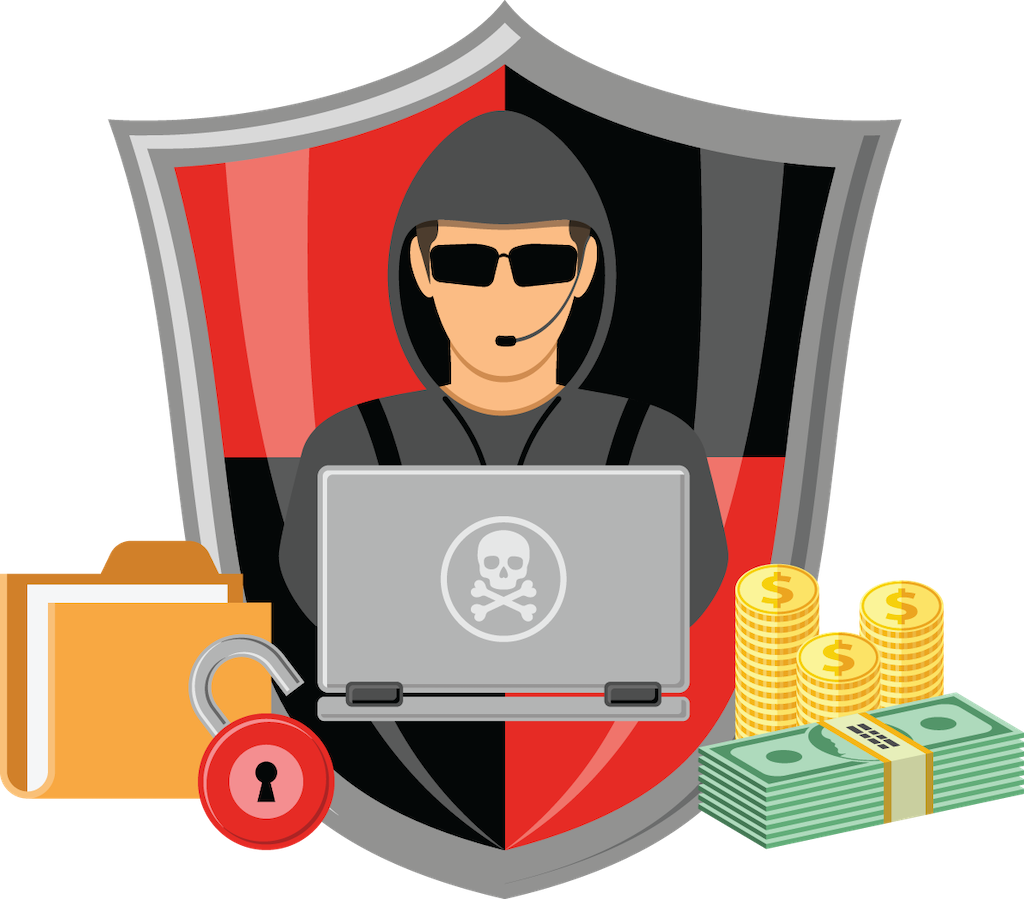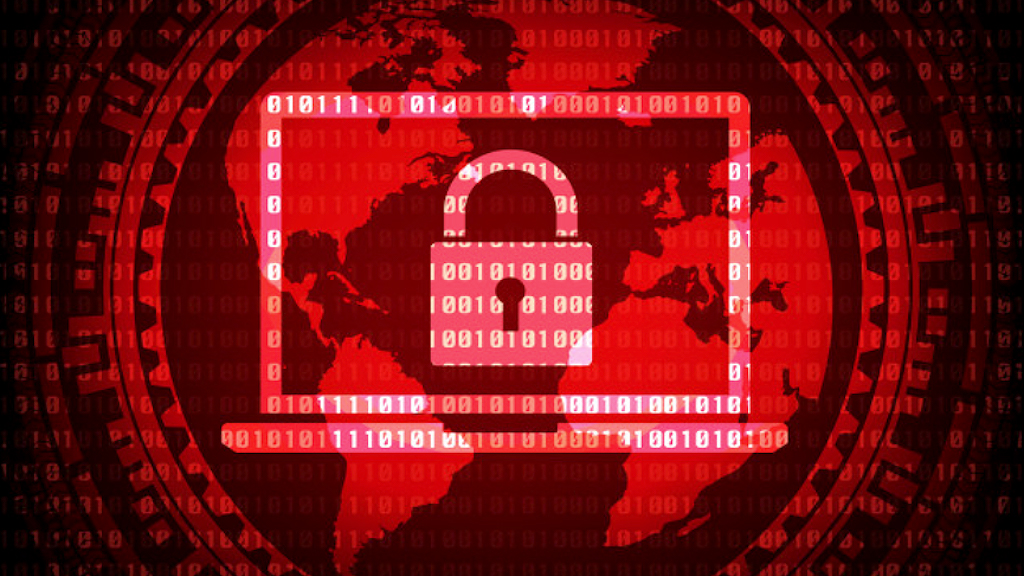Ransomware: What To Know About This Growing Cyber Threat
No one is safe from ransomware, and the attack methods are only getting more sophisticated.

Ransomware is a type of malware that employs encryption to hold a victim’s information at ransom.
Ransomware attacks are the most significant cyber security threat businesses face today.
Many businesses are leaving themselves vulnerable because they don’t have an incident response plan and never test their cyber defenses.
In a ransomware attack, the victims critical data is encrypted so that they cannot access files, databases, or applications.
Then, a ransom is demanded to be paid, usually in the form of bitcoin, for the victim to get the decryption key to have their access back, but this is not guaranteed.
Ransomware is often designed to spread across a network and target database and file servers, and can thus quickly paralyze an entire organization.
It’s a growing cyber threat, generating billions of dollars in payments to cybercriminals and inflicting significant damage and expenses for businesses and government organizations.
So how do you prevent & protect against ransomware? BE PREPARED!
What IsRansomware & How Does It Work?
Ransomware uses asymmetric encryption. This is cryptography that uses a pair of keys to encrypt and decrypt a file.
The public-private pair of keys is uniquely generated by the attacker for the victim, with the private key to decrypt the files stored on the attacker’s server.
The attacker makes the private key available to the victim only after the ransom is paid, though as seen in recent ransomware campaigns, that is not always the case.
Without access to the private key, it is nearly impossible to decrypt the files that are being held for ransom.
Many variations of ransomware exist. Often ransomware (and other malware) is distributed using phishing email spam campaigns or through targeted attacks.
Malware needs an attack vector to establish its presence on an endpoint. After presence is established, the malware stays on the system until its task is accomplished.
After a successful exploit, ransomware drops and executes a malicious binary on the infected system.
This binary then searches and encrypts valuable files, such as documents, images, databases, and so on.
The ransomware may also exploit system and network vulnerabilities to spread to other systems and possibly across entire organizations.
Once files are encrypted, ransomware prompts the user for a ransom to be paid within 24 to 48 hours to decrypt the files, or they will be lost forever.
If a data backup is unavailable or those backups were themselves encrypted, the victim is faced with paying the ransom to recover personal files.
Why and How Does Ransomware Spread?
Ransomware attacks are rapidly evolving for several reasons:
- Easy availability of malware kits that can be used to create new malware samples on demand.
- Use of known good generic interpreters to create cross-platform ransomware.
- Use of new techniques, such as encrypting the complete disk instead of selected files.
Ransomware spreads in various ways including:
- Malvertising: Cyber criminals place malicious ads on websites infecting unsuspecting visitors.
- Phishing: message scams that contain malicious attachments or links.
- Vulnerable Devices: Taking advantage of devices that have not been properly patched or updated.
Today’s thieves don’t even have to be tech savvy.
Ransomware marketplaces have sprouted up online, offering malware strains for any would-be cybercrook and generating extra profit for the malware authors, who often ask for a cut in the ransom proceeds.
Why Is It So Hard To Find Ransomware Perpetrators?
Ransom payments are usually made with anonymous cryptocurrency, such as bitcoin, making it difficult to follow the money trail and track down criminals.
Increasingly, cybercrime groups are devising ransomware schemes to make a quick profit.
Easy availability of open-source code and drag-and-drop platforms to develop ransomware have accelerated the creation of new ransomware variants, which helps script novices create their own ransomware.
Typically, cutting-edge malware like ransomware are polymorphic by design, which allows cybercriminals to easily bypass traditional or basic security methods.
Enhance your cyber security to better protect and quickly recover computer systems, networks, devices, and programs from any type of cyber attack. Defend your data and secure your business.
What Is Ransomware-as-a-Service (RaaS)?
Ransomware-as-a-service is a cybercrime economic model that allows malware developers to earn money for their creations without the need to distribute their threats.
Non-technical criminals buy their wares and launch the infections, while paying the developers a percentage of their take.
The developers run relatively few risks, and their customers do most of the work.
Some instances of ransomware-as-a-service use subscriptions while others require registration to gain access to the ransomware.
How To Defend Against Ransomware
To avoid ransomware and mitigate damage if you are attacked, follow these ransomware tips:
Backup Your Data:
The best way to avoid the threat of being locked out of your critical files is to ensure that you always have backup copies of them, preferably in the cloud and on an external hard drive.
This way, if you do get a ransomware infection, you can wipe your computer or device free and reinstall your files from backup.
Data backup and recovery plans protect your data and won’t tempt you to reward the malware authors by paying a ransom.
Backups won’t prevent ransomware, but it can greatly mitigate the risks.
Secure Your Backups:
Make sure your backup data is not accessible for modification or deletion from the systems where the data resides.
Ransomware will look for data backups and encrypt or delete them so they cannot be recovered, so use backup systems that do not allow direct access to backup files.
Utilize & Update Security Software Tools:
Make sure all your computers and devices are protected with comprehensive security software and keep all your software up to date.
Make sure you update your devices’ software early and often, as patches for flaws are typically included in each update.
Practice Safe Surfing:
Don’t respond to emails and text messages from people you don’t know, and only download applications from trusted sources.
This is important since malware authors often use social engineering attack methods to try to get you to install dangerous files.
Only Use Secure Networks:
Avoid using public Wi-Fi networks, since many of them are not secure, and cybercriminals can snoop on your internet usage.
Instead, consider installing a VPN, which provides you with a secure connection to the internet no matter where you go.
Stay Informed:
Keep current on the latest ransomware threats so you know what to look out for.
In the case that you do get a ransomware infection and have not backed up all your files, know that some decryption tools are made available by tech companies to help victims.
Helpful Ransom Decryption Tools:
Implement Cyber Security Awareness Program.
Provide regular security awareness training for every member of your organization so they can avoid phishing and other social engineering attacks.
Conduct regular drills and tests to be sure that training is being observed.
There are security measures your organization must put in place to counteract ransomware and other cyber threats to ensure your data and intellectual property are truly protected.
A successful business cyber security strategy encompasses layers of tools throughout the network such as:
- Point-in-Time Backup and Recovery
- Email Security with Target Threat Protection
- Vulnerability Scanning Software
- Next-Generation Antivirus Software
- Hardware and Software Firewalls
- Cybersecurity Awareness Training for your staff








